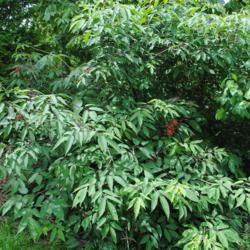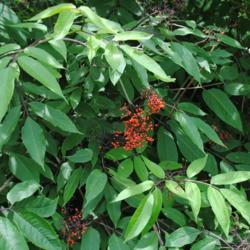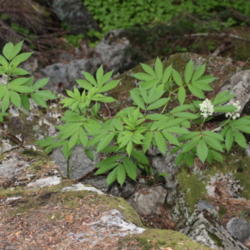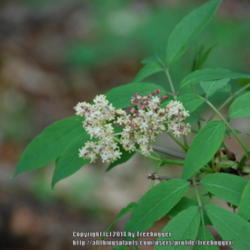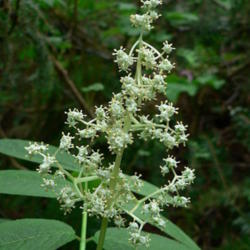Posted by
ILPARW (southeast Pennsylvania - Zone 6b) on Jan 4, 2018 1:52 PM concerning plant:
This American Scarlet Elder or Elderberry, which should be Sambucus racemosa pubens, grows wild in upland woods or along them and along fast moving creeks and streams from Nova Scotia and southeast Canada, New England, New York & Pennsylvania & northern new Jersey down the Appalachians to north Georgia, east & north Ohio, far northern Indiana, All of Michigan & Wisconsin, northern Illinois & Iowa, much of Minnesota, and spots in southwest Canada and the Rocky Mountains. The compound leaves have 5 to 7 leaflets and are sharply toothed and only develop a yellow-green fall color. The white flower clusters are not flat-topped but sort of a broad spike with a very strong, heavy fragrant scent in May. The globular red pea-sized berries are toxic to humans, unless cooked somehow, but loved by birds borne in June-July. It is fast growing. It is sort of difficult to transplant because the root system has deep laterals. I have only seen one of this species in the Midwest Collection at Morton Arboretum in Lisle, Illinois, even though its native range goes through northern Illinois. Some specialty or native nurseries might sell this. (The Sambucus racemosa racemosa is the European & Pacific Red Elder that is barely different and native to much of Europe and the Pacific Northwest. There are also the Siberian, the Japanese, the Northeast Asian, and the Rocky Mountain varieties of this species that grows over the Northern hemisphere.)

